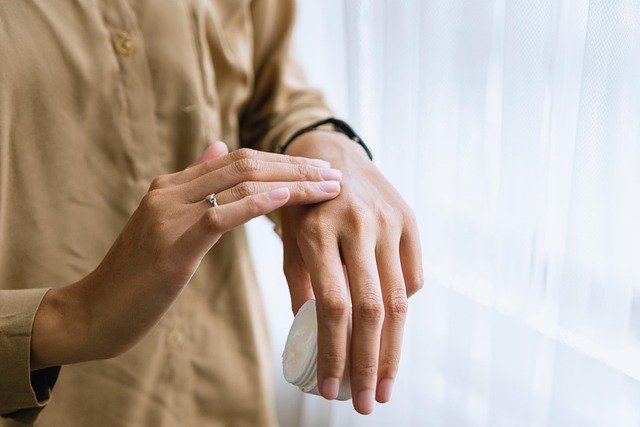Microbiome-focused routines for a balanced scalp and clearer complexion
A microbiome-focused routine balances skin and scalp by supporting natural microbes while addressing sebum, hydration, and barrier health. This approach uses gentle exfoliation, targeted serums, and mindful ingredient choices to encourage clearer complexion and a calm scalp without overstripping or excessive treatment.

A microbiome-focused routine recognizes that skin and scalp are ecosystems. Rather than targeting microbes aggressively, the goal is to support beneficial populations while addressing sebum production, hydration, and barrier integrity. Consistent, gentle care tuned to your skin type and scalp condition can reduce irritation, help clear pores, and maintain healthy hair follicles. Practical steps include measured exfoliation, serums that complement barrier repair, and ingredient choices that avoid unnecessary disruption of microbial balance.
How does the microbiome affect scalp and complexion?
The microbiome is a community of bacteria, fungi, and other microorganisms that live on skin and scalp. These microbes interact with sebum, sweat, and dead cells; they influence inflammation, oiliness, and susceptibility to flare-ups. A balanced microbiome helps prevent opportunistic overgrowth associated with irritation and clogged pores, while an imbalanced ecosystem can contribute to scalp sensitivity, dandruff, or uneven complexion. Strategies that preserve microbial diversity—mild cleansers, pH-aware products, and minimal use of broad-spectrum antimicrobials—support overall skin and scalp health.
How to manage sebum without over-drying?
Controlling sebum production is about regulation rather than elimination. Overly harsh cleansers or excessive exfoliation can strip oils, triggering rebound sebum production and a weakened barrier. Opt for sulfate-free cleansers and routines that remove surface oil and buildup but preserve essential lipids. Incorporate gentle physical or chemical exfoliation at appropriate frequency for your skin and scalp type; this helps clear pores and hair follicles without provoking increased sebum. Observing how your skin responds and adjusting frequency prevents a cycle of over-drying and excess oil.
How to support hydration and barrier function?
Hydration and barrier health are central to microbiome balance. A competent barrier keeps irritants out and moisture in, which reduces inflammation and protects resident microbes. Use humectants like glycerin or hyaluronic acid to attract moisture, and include lightweight emollients or oils to seal hydration where needed. Look for formulations with barrier-supporting ingredients—niacinamide, ceramides, or fatty acids—that complement the microbiome rather than disrupt it. Regular, appropriate moisturizing helps both complexion and scalp by reducing flakiness and sensitivity.
What scalp-friendly exfoliation practices help?
Exfoliation removes dead cells and product buildup that can trap sebum and encourage microbial imbalance, but technique matters. For the scalp, gentle physical exfoliants (soft brushes or scrubs with smooth particles) or low‑concentration chemical exfoliants (like diluted salicylic acid formulations) can be used intermittently to clear pores and reduce dandruff-related buildup. For facial skin, mild AHA or BHA routines tailored to skin tolerance can improve texture and clarity. Always follow exfoliation with hydration and barrier-supporting products to prevent disruption.
How to use serums in a microbiome-focused routine?
Serums can deliver concentrated ingredients that target hydration, barrier repair, or sebum regulation without heavy occlusion. Choose serums with proven, non-irritating actives—low-dose retinoids for cellular turnover where tolerated, niacinamide for oil regulation and barrier support, and lightweight antioxidant formulations to reduce oxidative stress. Apply serums after cleansing and exfoliation (when appropriate) and before moisturizers so actives can absorb. Patch-test new serums and introduce one product at a time to observe microbiome-friendly responses and avoid layering potentially antagonistic ingredients.
How do sustainability and waterless products fit in?
Sustainability and waterless formulations intersect with microbiome care through ingredient selection and concentration. Waterless products—oils, balms, and anhydrous serums—can reduce preservative load and offer concentrated actives with lower microbial contamination risk if properly formulated. Sustainable packaging and responsibly sourced ingredients matter for broader environmental impact but should not compromise efficacy or microbiome compatibility. Check ingredient lists for gentle preservatives, avoid unnecessary antibacterial additives, and favor brands that disclose ingredient sourcing and formulation rationale.
This article is for informational purposes only and should not be considered medical advice. Please consult a qualified healthcare professional for personalized guidance and treatment.
A balanced scalp and clearer complexion are achievable by aligning daily routines with the needs of the skin and its microbial community. Focus on gentle cleansing, measured exfoliation, hydration, barrier support, and intentional use of serums and ingredients. Observing how the scalp and complexion respond and adjusting frequency and products will help maintain microbial diversity while addressing concerns like excess sebum, dryness, or uneven texture. Consistency and moderation are key to sustainable results.





